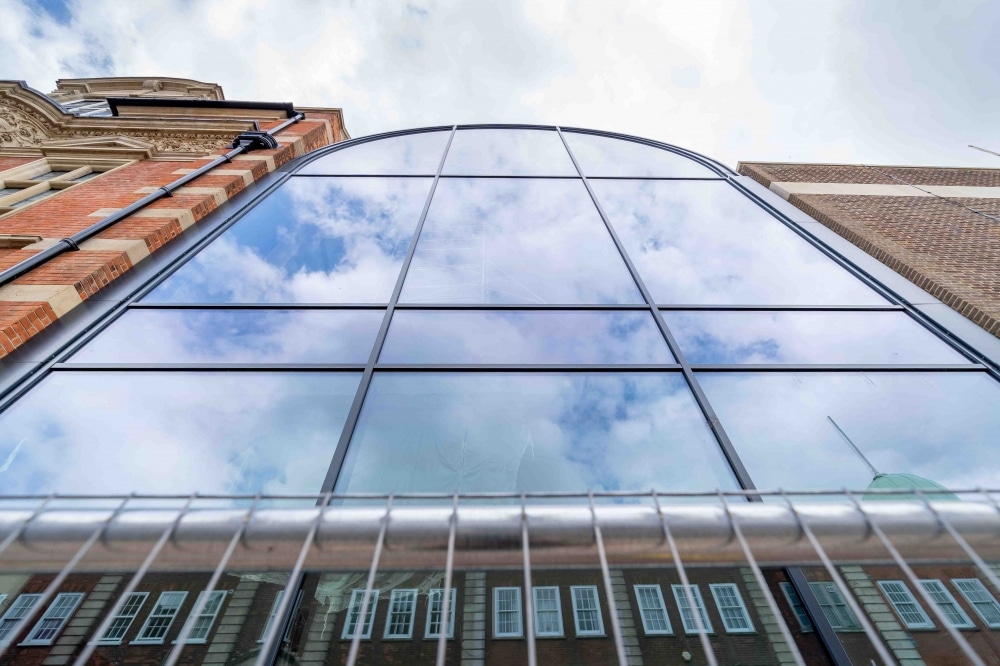The Amelia Scott is named after the early 20th-century campaigner for women’s suffrage who was one of the first two women to be elected to Tunbridge Wells Borough Council (TWBC) in 1919.
The mixed-use cultural hub inside the building is set to be a called just ‘Amelia’, with adult learning facilities, a library, archive storage, a community gallery, and a café, to name just a few of its functions.
While the originally proposed £13million facility has gone over budget, with costs rising to £19million, the repurposing of the old museum, art gallery, library and adult education centre is on track to be completed by spring 2022.
Duncan Booth, Construction Manager of Willmott Dixon, who are renovating the building for TWBC, showed the Times around the site and explained how the project aimed to maintain the building’s historic features while bringing it up to date with the current regulations.
He said: “There is always the trade-off between longevity and heritage. How do you take a building built in 1902 and make it work in the modern day?
“They don’t make them like this anymore. The only thing the building was compliant with was lighting regulations.”
Mr Booth said his team were particularly keen to keep the floor of the building, and therefore efforts have been made to bring it back to its original condition.
He said: “This is all heritage, so the terrazzo is being restored as best we can.”
TAKING SHAPE: Inside The Amelia
Sustainability is central to the Tunbridge Wells Borough Council and Kent County Council project, which is repurposing two Grade II-listed buildings that had very poor energy performance ratings, and no Building Research Establishment Environmental Assessment Method (BREEAM) rating, to create a unique sustainable integration of services for the community and culture in the heart of the town.
Mr Booth told of the impact this focus on sustainability had on the waste from the building: “We’ve been able to divert 99.32 per cent of waste from landfills. Only 7 cubic metres out of 1682 has been sent to landfill.
“The timber from the library has been sent to a men’s charity to make plaques for Tunbridge Wells in Bloom.”
He then revealed how Covid had impacted the works: “The biggest issue has been storage for materials. We’ve also just had a bit of a bite on concrete.
“We’ve only been allowed five bags of plasterboard per order and the wait time is eight weeks.”
Mr Booth added that he had his own personal connections to the town and explained how it had changed since then.
“My association with Tunbridge Wells goes back to 1987. It’s changed so much – back then the top of the town used to be the place to be, but now it’s The Pantiles.”
At the end of the tour, Duncan showed the Times some of the artefacts found while his team were carrying out the works.
They included old exam papers, receipts and a curious contraption which he is yet to discover what it actually is.
These finds highlight how the building’s history remains at the forefront of the Amelia’s adaption into a 21st-century cultural centre.
For more information, visit: theamelia.co.uk
FIGHTING FOR SUSTAINABILITY IS AT THE HEART OF RENOVATIONS
The 90 solar panels being installed at the hub will reduce the carbon footprint of the building by 12 tons of carbon annually during their 30-year life span – that’s an equivalent saving of 1,584 diesel car return journeys across the Borough between Royal Tunbridge Wells and Cranbrook.
The panels will generate enough power to meet The Amelia’s daily needs and export additional power to the grid, and the LED lighting throughout the building will make best use of power both day and night and contribute to lowering costs and the carbon footprint of the building.
Technology is being used to manage the rainwater harvesting tank, which is buried beneath the buildings. It holds 15,000 litres (enough for 200 baths), and the water collected will be used within the buildings to reduce mains water consumption, including using recycled water in the toilets.
When heavy local rainfall is forecast, water will be pumped out of the tank to make room for the expected downpour and help balance the load on nearby surface water drains.
Biodiversity, including bird boxes and bat boxes, and environmental sustainability will ensure The Amelia is able to exhibit top green credentials alongside its fascinating collection of books, objects, documents, photographs and visual art when it opens in 2022.
A net gain in biodiversity will be achieved through the inclusion of the bird and bat boxes and an insect hotel.
The new facility will meet Building Research Establishment Environmental Assessment Method (BREEAM) Very Good standards whilst also protecting the listed elements for future generations.
Much of this has been achieved via enhanced insulation and secondary glazing to maximise thermal transmittance and minimise heat loss – particularly given the environmental controls required to store and display the musem’s vast collection.
The project is receiving additional funding from The National Lottery Heritage Fund and Arts Council England.








